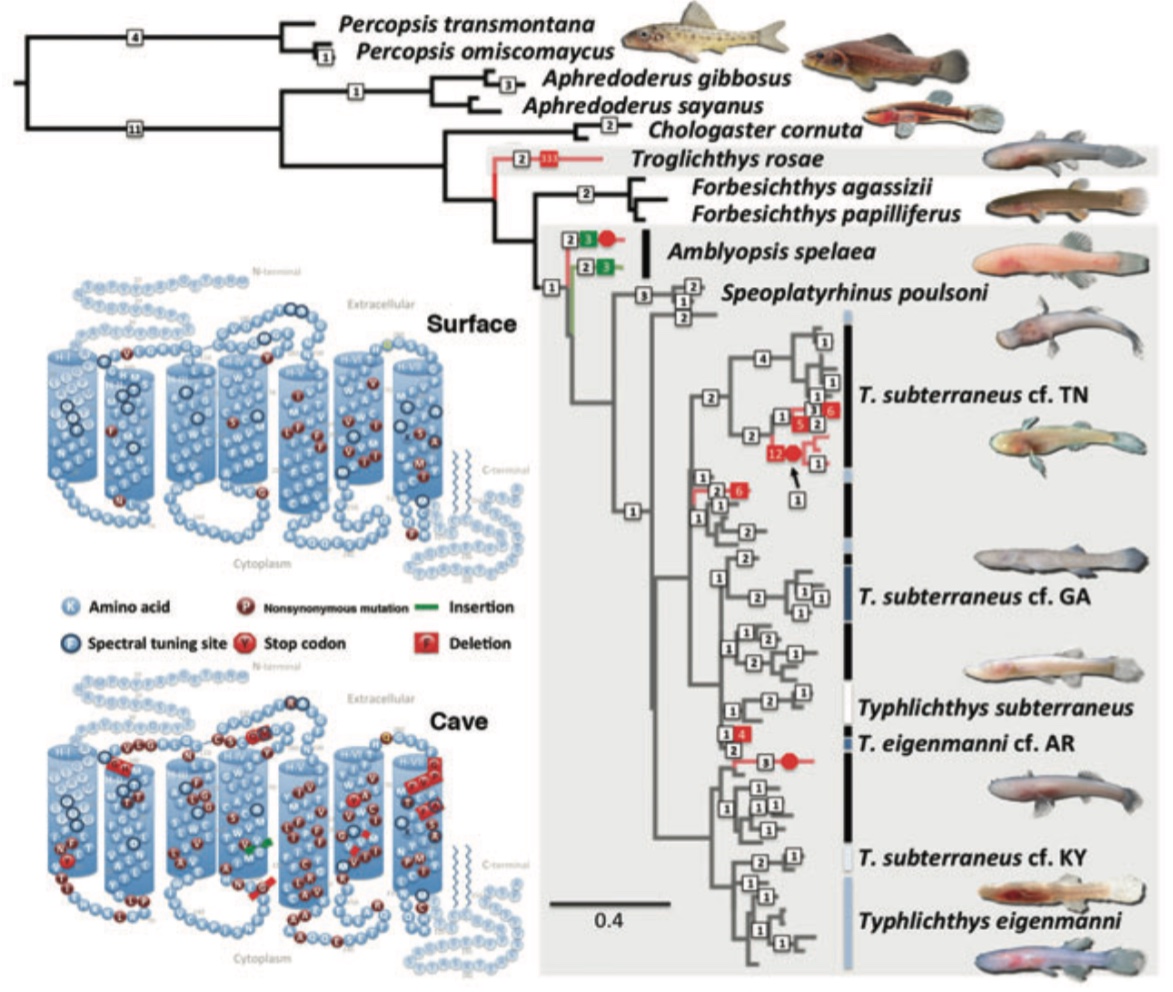Abstract
The genetic mechanisms underlying regressive evolution—the degeneration or loss of a derived trait—are largely unknown, particularly for complex structures such as eyes in cave organisms. In several eyeless animals, the visual photoreceptor rhodopsin appears to have retained functional amino acid sequences. Hypotheses to explain apparent maintenance of function include weak selection for retention of light-sensing abilities and its pleiotropic roles in circadian rhythms and thermotaxis. In contrast, we show that there has been repeated loss of functional constraint of rhodopsin in amblyopsid cavefishes, as at least three cave lineages have independently accumulated unique loss-of-function mutations over the last 10.3 Mya. Although several cave lineages still possess functional rhodopsin, they exhibit increased rates of nonsynonymous mutations that have greater effect on the structure and function of rhodopsin compared to those in surface lineages. These results indicate that functionality of rhodopsin has been repeatedly lost in amblyopsid cavefishes. The presence of a functional copy of rhodopsin in some cave lineages is likely explained by stochastic accumulation of mutations following recent subterranean colonization.
